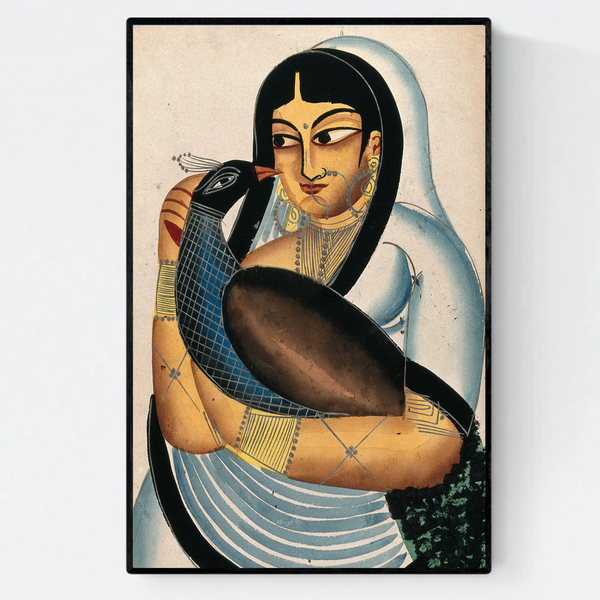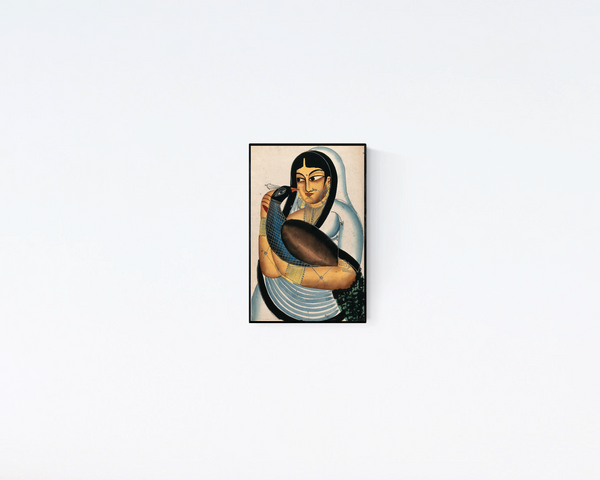1800s Kalighat painting of "A Courtesan Carrying A Peacock"
As Calcutta (now Kolkata) grew into a major city, it attracted migrants from across India, including patuas—folk painters known for their storytelling scrolls. Many settled around the Kalighat temple. Traditionally, patuas traveled through villages, unrolling their painted scrolls as they narrated mythological stories. However, this form of storytelling didn’t appeal to Calcutta’s urban crowd. To adapt, patuas in Kalighat began painting small religious images which became popular souvenirs for visitors.
Over time, Kalighat paintings expanded beyond religious themes to depict a variety of subjects. Since the goddess Kali symbolized female power, Kalighat painters often portrayed women in dominant roles, turning their suitors into charlatans or submissive figures. Wives and mistresses were frequently shown punishing or trampling over vain, unworthy men.
Kalighat painting uniquely captured everyday life in Calcutta from the early 1800s to around 1930. However, as cheaper, mass-produced images became more popular in the early 20th century, demand for hand-painted works declined. Many patua families had no choice but to leave the city and return to their ancestral villages or seek alternative livelihoods
- 11" x 17" matte paper
- Reprint of the original painting.
- Frame not included
- Frame used in photo: https://amzn.to/3O81zfa



